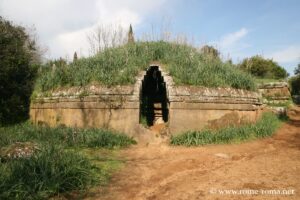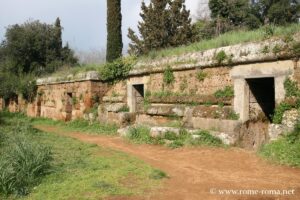The necropolises of Cerveteri, located 45 km northwest of Rome, notably the Banditaccia site, are among the most remarkable Etruscan funerary sites. They feature a vast and unique ensemble of tombs mainly dating from the 9th to the 3rd century BC.
The burials, either carved into tuff or built as tumuli, reveal elaborate architecture and elements reflecting Etruscan daily life.
Covering an area of 400 hectares, it is the largest known ancient necropolis in the Mediterranean basin.
Banditaccia Necropolis
The Banditaccia necropolis (Necropoli della Banditaccia in Italian) is close to the town of Cerveteri, less than a kilometer to the north. It was inscribed on the UNESCO World Heritage List in 2004, along with the Monterozzi necropolis in Tarquinia.
Located on a tuff plateau, it stretches across nearly 400 hectares. It includes thousands of tombs, around 400 of which are open to the public.
Many of the artifacts found in the necropolis are preserved in the National Etruscan Museum of Villa Giulia in Rome, including the famous Sarcophagus of the Spouses, discovered in Banditaccia around 520 BC.
The Cerite National Archaeological Museum in Cerveteri also houses Etruscan artifacts found here.
Funerary Urbanism and Etruscan Legacy
These tombs are arranged according to a quasi-urban plan, with districts, streets, and small squares. They also represent the only surviving testimony of Etruscan residential architecture.
The depiction of daily life on the tomb frescoes, many of which are replicas of Etruscan houses, offers a unique insight into the lost culture.
Remarkable Tombs and Frescoes
Some of the site’s tombs are monumental, carved into the rock and topped with impressive tumuli. Among the most renowned are the Regolini-Galassi Tomb, the Tomb of the Capitals (Tomba dei Capitelli), and the Tomb of the Shields and Chairs (Tomba degli Scudi e delle Sedie).
Some contain bas-reliefs, while others house remarkable wall paintings, such as the Tomb of the Painted Lions (Tomba dei Leoni dipinti) and the Tomb of the Capitals (Tomba dei Capitelli).
Six Centuries of Diverse Burials
The oldest tombs date back to the Villanovan culture (9th century BC), while the most recent ones belong to the Etruscan period (3rd century BC).
Villanovan tombs are characterized by their small pit shape used for ashes or by burial pits.
From the Etruscan era, there are two types of burials: tumuli and cube-shaped tombs arranged in regular rows outlining streets. In Banditaccia, two such streets from the 6th century BC can be found: via dei Monti Ceriti and via dei Monti della Tolfa.
The tumuli are characterized by a circular tuff structure, whose interior recreates the home of the deceased, with a corridor (dromos) leading to different rooms. Among them, the Tomb of the Reliefs, dating to the 4th century BC, is particularly well preserved, with its wall and column frescoes. These depict tools, weapons, household items, and animals, illustrating the Etruscan daily life.
Informations
| Banditaccia Necropolis Via della Necropoli 43/45 – Cerveteri |
Opening hours and visits (to be confirmed)
|
Links and information
|
Photo gallery
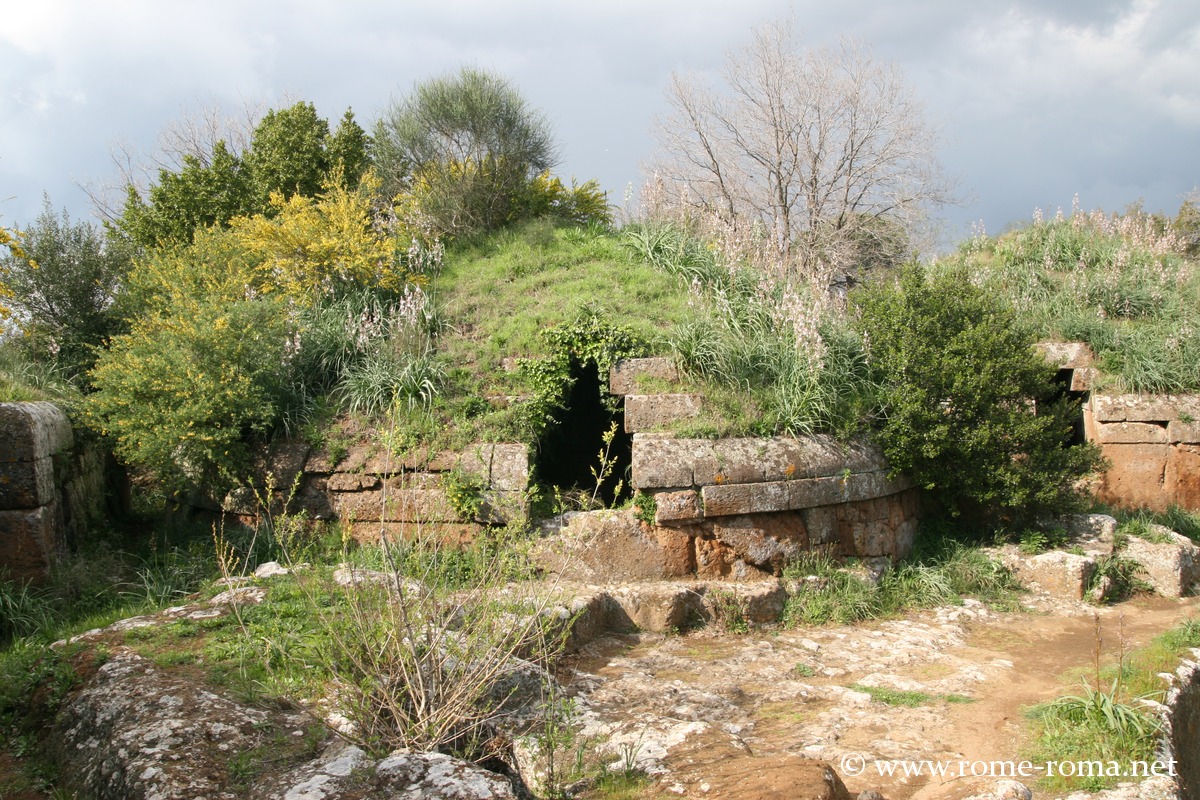

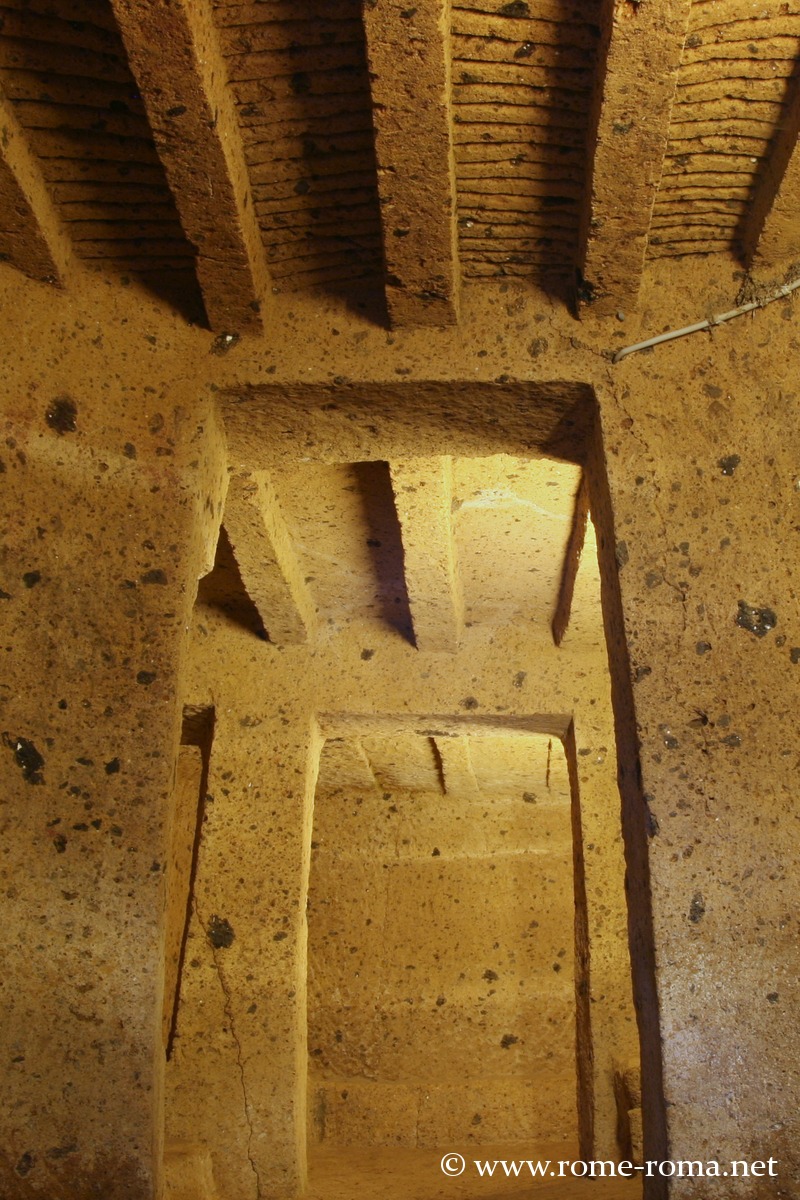
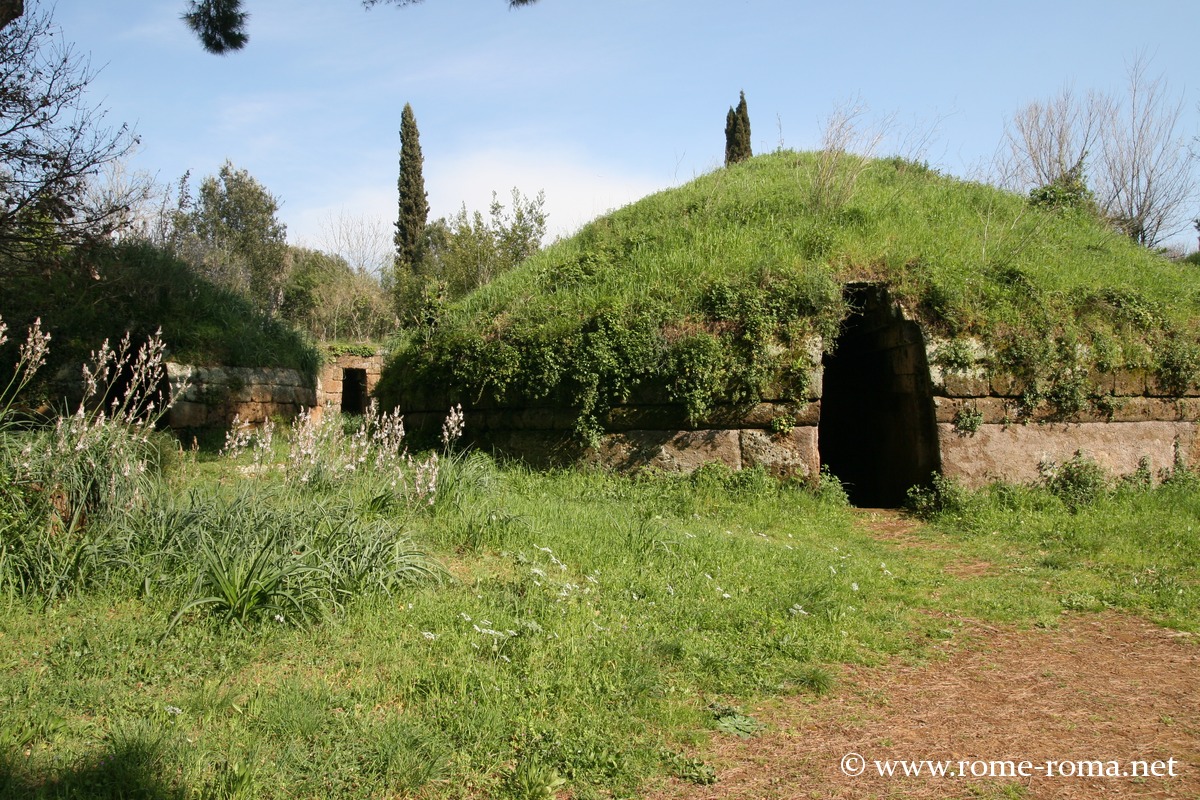
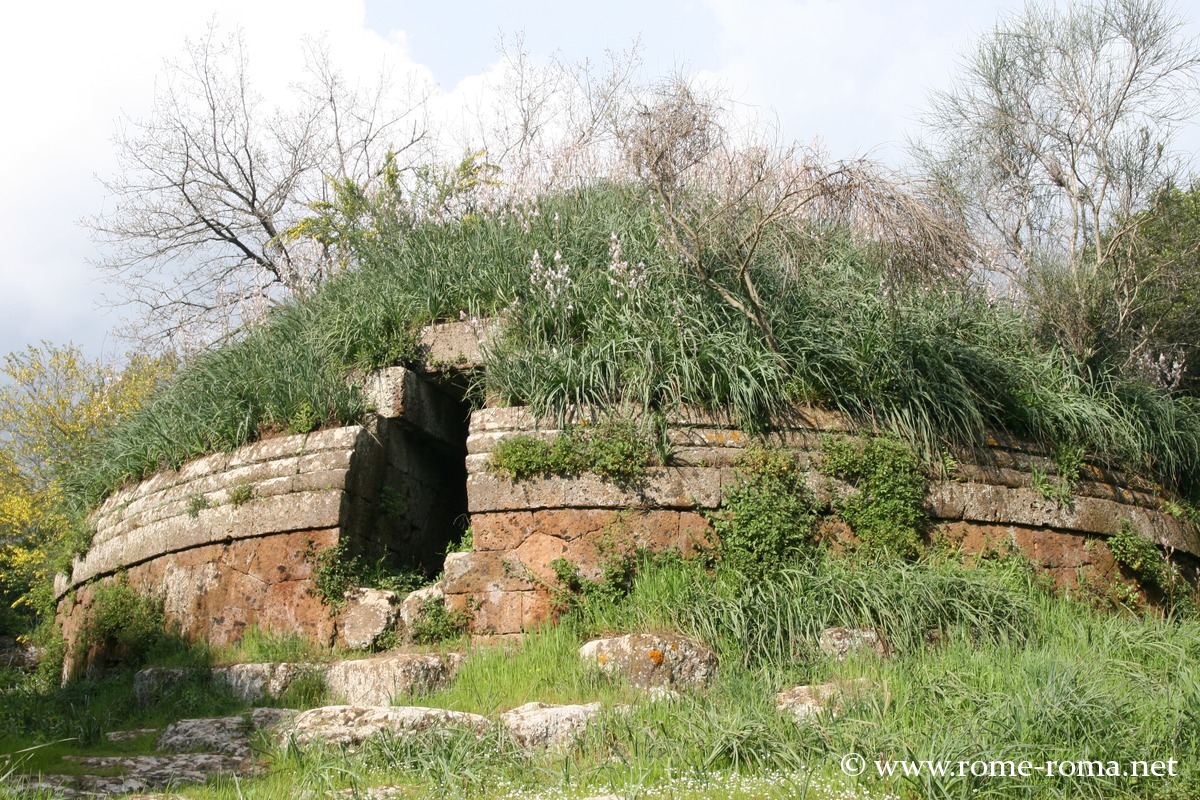
Map and address
Address : Via della Necropoli, 43/45, 00052 Cerveteri RM, ItalieIf you see this after your page is loaded completely, leafletJS files are missing.
Cerveteri Archaeological Museum
| Museo Nazionale Archeologico Cerite Piazza Santa Maria / 00053 Cerveteri (RM) |
| Opening hours: Tuesday to Sunday from 9:00 am to 7:30 pm (ticket office closes at 6:30 pm). Admission: see the ticket conditions for the necropolis above |
| Links: cultura.gov.it and pact.cultura.gov.it |

